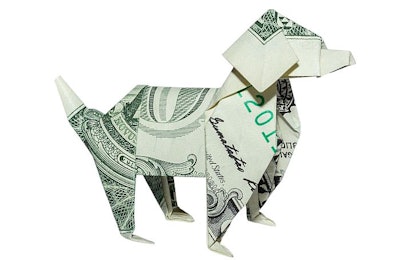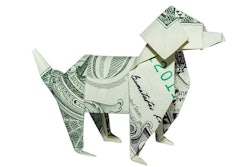
The U.S. pet food market grew 7.3% in 2019, reaching US$36 billion, according to Maria Lange, vice president of strategic verticals pet and cannabis for Nielsen. That growth happened despite the continuing decline of sales of grain-free pet food, she said.
Lange presented this and other data at the 13th Annual Pet Food Conference, organized by the American Feed Industry Association during the International Production & Processing Expo on January 28 in Atlanta, Georgia, USA.
Pet food e-commerce fuels growth
Unsurprisingly, 65% of the U.S. pet food market growth was driven by e-commerce, Lange said. Specifically, the online channel increased 28.5%, reaching US$5.8 billion in pet food sales. It now accounts for 16% of the pet food market. Boosting the e-commerce boom are consumer motivations such as price/value, convenience, variety and experience, she added.
The largest channel for pet food sales in 2019, at 44%, was what Lange called mainstream retail – meaning grocery and mass market stores – which saw sales of US$15.8 billion, reflecting 6.7% year-over-year (YOY) growth.
Pet specialty retail was the lone channel seeing a decline, of -1.5%, ending up at US$8.3 billion sales and 23% of the market. That is likely due to the decrease in grain-free pet food, an important category for pet specialty stores, Lange said.
The remaining 17% of the market is comprised of sales through outlets such as veterinary clinics, farm and feed stores, Costco, direct-to-consumer and others. While Nielsen doesn’t track sales in those outlets, Lange estimated pet food reached US$6.3 billion in 2019, up 3.5% over the prior year.
Data ties grain-free sales slide to FDA DCM announcements
Lange’s data on grain-free pet food sales made a stark point: For the first half of 2018, the category was still increasing at 8.4% YOY in pet specialty; by the end of 2019, the category had decreased 5.9% in that channel. She explained that the first Food and Drug Administration (FDA) alert over its investigation into canine dilated cardiomyopathy (DCM) and grain-free products occurred in July 2018; by end of 2019, the agency had issued two more announcements, including one in June 2019 naming brands implicated in the investigation.
Comparatively, the overall U.S. market experienced slight growth of 3% for grain-free pet sales in 2019, showing the impact on the pet specialty channel. The blow was even worse for the 16 pet food brands named most prominently in FDA’s June 2019 announcement; their sales declined -13.3% by end of 2019, Lange said.
In contrast, “with grain” pet food sales increased by 4% in 2019 in the overall U.S. market, though sales in pet specialty dropped -1.6%. For the 16 brands prominently named by FDA, their pet foods with grains also declined in 2019, falling -10.9%.
Premium pet foods in newer formats, private label see growth
Picking up some of the sales growth slack, newer pet food formats such as freeze-dried, dehydrated, frozen, refrigerated and fresh are taking more market share, Lange’s data showed. For example, partially freeze-dried and dehydrated products accounted for 9% of the dry pet food market in 2017; that share rose to 13.1% in 2019. On the wet side, frozen pet foods’ share increased from 11.9% in 2017 to 17.6% in 2019.
In addition, the overall dry category declined by -4.9% YOY in 2019, mainly due to a -9.2% drop in traditional dry pet food sales, while what Lange called “preserved” foods (freeze-dried and dehydrated) soared 39.1%. On the other hand, wet pet food sales overall grew by 5%, fueled by a 55.4% boost from “fresh” categories such as frozen and refrigerated. At the same time, traditional, shelf-stable wet pet food decreased by -1.8%.
As a sign of how these types of products are even going mainstream, Lange presented data on the growth of freeze-dried pet food in mass market outlets. “Kibble plus” pet foods, which combine freeze-dried bits with traditional kibble, reached US$7.3 million in 2019 in the mass channel, despite the average store carrying only two such items.
Another growth category – one helping brick-and-mortar outlets fight the e-commerce boom, Lange said – is private label. In the pet specialty channel, private label pet food sales have soared 75% since 2017 and 19% in 2019 alone. In the overall U.S. pet food market, private label products reached US$2.2 billion in sales last year.

















